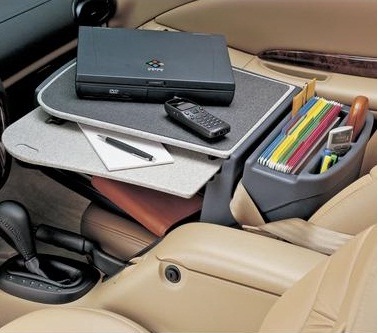From Milk Crates To Mobile IT: Hospice Improves Access To Patient Records On The Go

By George Zimmerman, St. Peter’s Health Partners Web Services WebManager
Employees on the go know that handling documents in the field can be a difficult task – and perhaps no workforce knows this better than hospice caregivers. Hospice workers are road warriors who are constantly on the go to see patients in their homes, a job description that seemingly requires mobile technology.
Compared to any other industry, healthcare professionals spend almost twice as much time with documents, and 33% of their searches are unsuccessful (IDC, 2007.) Implementing a secure document management solution helps providers meet the standards for patient information protection under acts like HIPAA and HITECH, and also helps staff reduce the amount of time they have to spend searching for patient files and the information they need to perform their job well.
 Providing care remotely was essentially a paper-based process for the clinical staff of The Community Hospice, part of St. Peter’s Health Partners in Albany, New York. Until very recently, hospice caregivers carried their patient files in the back seat of their cars. Caregivers may carry files in a file box or even a milk crate; despite stringent practices there was still risk of information being exposed, or just not having the right files available. The poor file organization with no central location for ease of access or search functionality put patient data at risk and raised concerns regarding HIPAA and HITECH. If medical records are misplaced, misused or stolen, consequences can include job and reputation loss.
Providing care remotely was essentially a paper-based process for the clinical staff of The Community Hospice, part of St. Peter’s Health Partners in Albany, New York. Until very recently, hospice caregivers carried their patient files in the back seat of their cars. Caregivers may carry files in a file box or even a milk crate; despite stringent practices there was still risk of information being exposed, or just not having the right files available. The poor file organization with no central location for ease of access or search functionality put patient data at risk and raised concerns regarding HIPAA and HITECH. If medical records are misplaced, misused or stolen, consequences can include job and reputation loss.
To combat our document management issues, The Community Hospice chose a solution that included storing files in Xerox DocuShare. Initially, we transformed our paper-based process to an electronic process by consolidating our office devices and using multi-function printers to scan files into DocuShare. These documents are scanned directly into a secure Xerox DocuShare Medical Record Container, which is easily accessible from a patient’s home or a remote office. We also chose to integrate with other solutions including a SharePoint portal, and AllScripts electronic health records (EHR) system. Xerox DocuShare and SharePoint integration reduced the time required to maintain records, and mobile access anytime, anywhere – allowing caregivers to retrieve information via AllScripts remotely on their laptops utilizing Blackberry data plans. In addition, we are looking at three mobile vendors for mobile GPS mapping solutions, which will include the ability of navigation, mileage logging, and direct and indirect patient care visit times.
Since implementing the new solutions, The Community Hospice has held several training sessions for our employees to learn how to use the scanner and load documents into the DocuShare Medical Record Container. With an automated and streamlined workflow, we can better coordinate care for our patients; replace paper-based records which can be incomplete, have legibility issues and be difficult to manage; maintain an information trail that can be analyzed for auditing, quality and compliance; and have all documents readily available to staff whether they are in a remote office or caring for patients in their homes.
For more information, you can find a PowerPoint presentation located here: http://www.sphcs.org/AIIM2009
